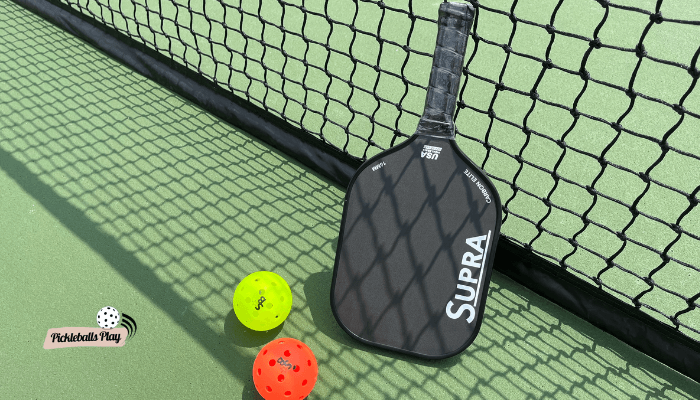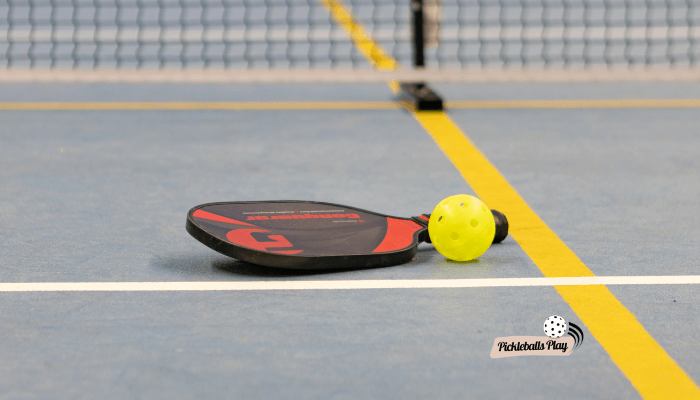So, you’ve decided to take up pickleball, but now the question is: What kind of paddle should you buy? Don’t worry, we’ve got you covered! In this guide, we’ll walk you through everything you need to know to choose the perfect pickleball paddle for your playing style. Let’s dive in!
1. Weight of the Paddle
The weight of the paddle is crucial when it comes to finding a paddle that suits you best. If you’re just starting out, opt for a lighter paddle as it offers more control. As you gain experience, you can switch to a heavier paddle to add power to your game. It’s all about finding the right balance for your performance!

2. Shape of the Pickleball Paddle
Believe it or not, the shape of your pickleball paddle can make a huge difference in your game. Paddles with smaller heads give you more control, while those with larger heads deliver more power. If you’re new to pickleball, start with a smaller head for better control, and as you become more experienced, switch to a larger head to amp up your power!
3. Check Out the Grip Size
Never underestimate the importance of grip size! It can greatly impact your comfort and game performance. A grip that’s too small or too large can be uncomfortable and affect your gameplay. As a beginner, go for a comfortable grip size. With time, you may choose a smaller grip to enhance control. It’s all about finding that sweet spot for your hands!
4. Pickleball Paddle Material
When it comes to pickleball paddle materials, you have two main choices: graphite and fiberglass. Graphite paddles are pricier, but they offer superior power and control. On the other hand, fiberglass paddles are more budget-friendly but don’t provide as much power and control. For beginners, a fiberglass paddle is a great starting point, and as you progress, you can upgrade to a graphite paddle for that extra power and control!
5. USA Pickleball Approved
If you’re planning to play in tournaments, it’s essential to choose a paddle approved by the USA Pickleball Association (USAPA). Look out for the USAPA approval logo when shopping for a paddle, so you know you’re getting a paddle that’s tournament legal. Don’t miss out on the action!
6. Look for Edge Guard

Protect your investment! Most pickleball paddles come with an edge guard made of durable material to shield the paddle from impact. Look for a pickleball paddle with a high-quality edge guard that won’t wear down quickly. Your paddle will thank you for it!
FAQs
Is it better to have a lighter or heavier pickleball paddle?
It depends on your playing style! A lighter paddle offers more control, while a heavier paddle gives you more power. For beginners, a lighter paddle is often the best choice. However, as you gain experience, you might want to switch to a heavier paddle to boost your power on the court.
Is graphite or fiberglass better for pickleball?
Once again, it depends on your playing style! Graphite paddles are more expensive but offer superior power and control. Fiberglass paddles, on the other hand, are more budget-friendly but provide slightly less power and control. Beginners usually start with fiberglass paddles, but as they progress, they might opt for the added advantages of a graphite paddle.
When should I replace my pickleball paddle?
You should consider replacing your pickleball paddle when it starts to show signs of wear and tear, such as cracks, chips, or dents. Additionally, if your paddle no longer feels comfortable to use, it’s time to find a new one. Don’t let a worn-out paddle hinder your performance!
What makes a good pickleball paddle?
A good pickleball paddle should be lightweight, durable, and well-balanced. It needs to give you enough power to get the ball over the net and provide control during rallies. Furthermore, the handle should be comfortable for a solid grip. Look for features like grooves that help generate spin for improved shot control. A top-notch paddle will take your game to new heights!
Conclusion
Choosing the right pickleball paddle is crucial for optimal performance and enjoyment of the game. By determining your playing style, grip preference, skill level, and weight and material preferences, you can select a paddle tailored to your needs. For power hitters, look for graphite or composite paddles with larger sweet spots and heavier weights. Control players should choose paddles with a bit more flex and lighter weights around 7.0-7.6oz. Balance is also key – make sure to test midsize grips and evenly balanced paddles to find your ideal fit. While it can take some trial and error, taking the time to find the best paddle for your game is well worth it. With so many options on the market, use this guide to narrow your selection and be confident you’ve chosen the perfect paddle to elevate your play.



